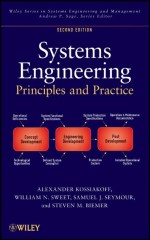A Product Design Specification (PDS) serves as the architectural blueprint for bringing new products to life. Bridging the conceptual and the concrete, a robust PDS not only shapes stakeholder expectations but also ensures every team member shares a clear vision of the product’s end goal. From market analysis and functional requirements to design ergonomics and product usability, an effective PDS encapsulates the essence of a product before it even takes physical form.
In this article, we delve into the core components that constitute a successful PDS, highlight common pitfalls to avoid, and provide a glimpse into the tools and templates that can streamline the PDS process. As we guide you through this foundational element of the product development lifecycle, you’ll discover how a meticulously crafted PDS can be a catalyst for innovation and efficiency.
Table of Contents
- Key Components of an Effective PDS
- The Process of Creating a PDS
- Common Product Design Specification Pitfalls and How to Avoid Them
- Product Design Specification (PDS) Templates and Tools
- Finalizing Your Product Design Specification (PDS)
- PDS Template: A Comprehensive Starting Point
- Check Your Product Design Specification (PDS)
- Mistakes to Avoid in Your Product Design Specification (PDS)
- Conclusion: The Value of a Well-Crafted PDS
- Next Steps After PDS Completion
- Useful Resources for Product Design and Development
Key Components of an Effective PDS
In the realm of product development, the efficacy of a Product Design Specification lies in its meticulous composition. An effective Product Design Specification (PDS) is both a reflection of market demands and a roadmap to the product’s success. Here, we explore the essential elements that make up an impactful PDS.
Creating a Good Product Design Specification (PDS)
Creating a comprehensive Product Design Specification (PDS) is crucial to the success of any new product. A PDS acts as a navigational tool, guiding both designers and engineers through the complexities of product development. The following table outlines the key elements that constitute a well-rounded PDS, each accompanied by a description to aid in crafting a document that serves as a clear and actionable blueprint for bringing your product vision to life. Understanding and integrating these elements can help ensure your product meets market demands and exceeds customer expectations.
| Key Element | Description |
|---|---|
| Clear Objectives | Define what the product is meant to achieve, including its primary function and goals. Objectives should be specific, realistic, and aligned with market needs. |
| Target Market | Identify who the product is for. Provide a profile of the target user, including demographics, preferences, and behaviors to ensure the product meets their expectations. |
| Performance Criteria | List the performance specifications the product must reach. This includes speed, durability, efficiency, and other measurable attributes that define product quality. |
| Design Constraints | Outline any limitations such as size, weight, materials, and budget that the design team must work within. Constraints guide the development process without stifling creativity. |
| Functional Requirements | Delineate the capabilities the product must have to satisfy user needs. This includes its core functions, user interactions, and any other essential operations. |
| Usability | Examine how users will interact with the product. Considerations here include the user interface, ergonomics, and accessibility to ensure a positive user experience. |
| Aesthetic Specifications | Describe the desired look and feel of the product. This involves color schemes, style, branding, and overall visual appeal that will attract users. |
| Material and Manufacturing | Detail the materials required for the product and how they should be sourced. Include information on the manufacturing process, techniques to be used, and considerations for sustainability. |
| Safety and Compliance | Ensure the product design adheres to all relevant safety standards and regulatory requirements. This reduces risk and ensures the product is legally compliant. |
| Quality Assurance | Establish testing procedures and quality benchmarks that the product must pass before going to market, ensuring reliability and customer satisfaction. |
| Timeline and Milestones | Include a realistic timeline with milestones for product development stages, which keeps the project on track and ensures timely delivery. |
| Cost Analysis | Provide a detailed cost breakdown including production, shipping, and any other expenses to help maintain budget control throughout the development process. |
Market and User Analysis
Before diving into the product specifics, understanding the target audience and the product’s potential position in the market is paramount. This preliminary analysis informs the PDS with strategic insights, paving the way for a product that not only meets but exceeds user expectations. Aligning your PDS with user demographics and consumption trends is a crucial first step in crafting a document that will resonate market awareness.
Functional and Performance Requirements
Setting measurable goals for product performance is the cornerstone of your PDS. Clearly defined functionality requirements ensure that each design choice is made with purpose and precision. In this section, the PDS must articulate the product’s capabilities, operational benchmarks, and the technological specifications driving it. These parameters provide a clear direction for design and engineering teams as they navigate the myriad of possible product iterations.
Aesthetics and Usability
Great design is more than skin deep. The aesthetics of your product are pivotal for market appeal, while ergonomics and usability dictate customer satisfaction. A comprehensive PDS prioritizes the user experience, assuring that the form complements function. Addressing these aspects in your PDS will not only elevate the product’s marketability but also enforce a user-centric approach to product development. It sets a standard for the product’s look and feel, ensuring that teams remain aligned with a common design language.
By incorporating these pivotal components into your PDS, you ensure a blueprint that guides your product toward market success with a clear focus on functionality, performance, and user experience. In the following sections, we’ll discuss the processes vital for creating a PDS that serves as both an inspiration and a stringent set of guidelines for your product’s journey from concept to customer.
Recommended Further Reading Amazon BooksThe Process of Creating a PDS
The creation of a Product Design Specification (PDS) is more than just a documentation task; it’s a vital phase in product development that demands careful planning and collaborative effort. Below is a table that outlines each step of the PDS process, providing insight into how to transform abstract ideas into a clear and actionable blueprint.
| Step | Action |
|---|---|
| Initial Stakeholder Engagement | Convene with key stakeholders from various departments to identify needs, expectations, and insights that will shape the PDS. |
| Define SMART Objectives | Ensure objectives are Specific, Measurable, Achievable, Relevant, and Time-bound for a focused and realistic PDS. |
| Determine Key Requirements | Identify and document essential functional requirements, design specifications, and constraints that guide development. |
| Collaborative Drafting | Create the initial PDS draft through a collaborative process, integrating input from all engaged stakeholders. |
| Iterative Reviews and Refinement | Regularly review and refine the PDS, incorporating feedback to ensure it remains aligned with project progression. |
| Finalization and Validation | Validate the final PDS with stakeholders, and ensure it is a complete, testable, and feasible representation of the product to be developed. |
This structured approach to developing a PDS not only streamlines the product development cycle but also ensures that every team member is aligned with a unified vision, setting the foundation for a successful product launch.
Common Product Design Specification Pitfalls and How to Avoid Them
Creating a Product Design Specification (PDS) is a nuanced process fraught with potential stumbling blocks that can hinder progress. Understanding these pitfalls and adopting strategies to mitigate them can significantly refine your approach to the PDS, ensuring it serves as a reliable guide for your product’s development.
Over-Specification
One such obstacle is over-specification, which can unnecessarily constrain creative solutions. To prevent this, provide ranges or flexible guidelines where possible, instead of rigid constraints. Prioritize essentials and leave room for innovation in areas that can benefit from adaptive design. This approach allows for functional and aesthetic evolution during the prototyping and testing stages.
Under-Specification
Conversely, under-specification may lead to ambiguity, causing confusion and misalignment among teams. Strike a balance by ensuring all critical parameters are adequately detailed, while still encouraging input and improvisation during the development process. Clearly defined goals and transparent communication are vital in fostering a shared understanding of the PDS content.
Assumptions Versus Data-Driven Decisions
Avoid basing the Product Design Specification (PDS) on assumptions. Instead, ensure each stipulation is bolstered by data-driven insights. This reliance on solid data anchors the PDS in reality, enriching the document with market intelligence and user research that guide informed decision-making.
By navigating these pitfalls with informed strategies, you can create a balanced PDS that is neither overly restrictive nor dangerously vague, but rather a dynamic document propelling your product towards success.

Product Design Specification (PDS) Templates and Tools
In the quest to craft an impeccable Product Design Specification, leveraging the right templates and tools can streamline the process, fostering precision and efficiency. PDS templates serve as valuable starting points, offering a structured format that can be customized to suit the specifics of any project.
Template Overview
A well-designed Product Design Specification (PDS) template acts as a scaffold for your specification document, ensuring all critical elements are addressed. It provides a consistent format that reduces the risk of omissions and can be adapted across different projects, preserving the integrity of the product vision while accommodating unique requirements.
Digital Tools for PDS Creation
Embracing digital tools for Product Design Specification (PDS) creation offers additional advantages. Collaboration platforms enable real-time input from cross-functional teams, version control ensures the latest document updates are accessible, and comment features facilitate ongoing dialogue. Whether you opt for comprehensive software solutions or specialized online resources, these tools can drastically improve the collaborative nature of your PDS process.
Employing these templates and digital resources not only simplifies the PDS development but also empowers teams to produce detailed, coherent, and actionable specifications that guide the product to fruition.
Example Product Design Specification (PDS) Template
Structured guidance is the backbone of an effective Product Design Specification. Below, find an example template, fashioned to capture the critical components of a PDS. By adhering to such a framework, product designers can anticipate the necessities, challenges, and aspirations for bringing their innovation to the market with precision and intent.
| Section | Description | Guidelines/Questions |
|---|---|---|
| Objective | What is the product’s intended purpose? | Define the primary goals and problem the product aims to solve. |
| Target Market | Who will use the product? | Describe the demographic, behaviors, and needs of the end user. |
| Functional Requirements | What will the product do? | List the features and capabilities the product needs to fulfill its purpose. |
| Performance Criteria | How well should the product perform? | Detail the required levels of performance, reliability, and efficiency. |
| Design Specifications | What are the size, shape, materials, and aesthetics? | Provide the details about the product’s physical appearance and construction. |
| Constraints | What limitations are present? | Identify budget, materials, time constraints, or regulatory requirements. |
| Safety & Compliance | How will safety be ensured? | Detail the safety features and standards the product must comply with. |
| Quality Assurance | How will product quality be evaluated? | Define the testing procedures and quality checkpoints. |
| Manufacturing | How and where will the product be manufactured? | Document the production process, location, and equipment requirements. |
| Packaging & Shipping | How will the product be packaged and distributed? | Explain the packaging design and logistics for distributing the product. |
| Environmental Considerations | What is the environmental impact? | Address sustainability, including the use of recycled materials and energy efficiency. |
| Timeline & Milestones | What are the timeframes for development? | Mark the significant dates and milestones from concept to launch. |
| Cost Estimates | What will the overall product cost be? | Provide an estimated budget for development, production, and marketing. |
Finalizing Your Product Design Specification (PDS)
Finessing the final version of your Product Design Specification is paramount in solidifying the project’s direction. Consider this stage as a crucial checkpoint to validate that every detail in your PDS aligns perfectly with your product’s vision and operational capabilities.
Review and Validation
Comprehensive cuts across various disciplines within your team are vital. It’s where engineers, marketers, and designers converge to critically assess every clause in the PDS. Their expertise enables them to spot potential oversights and interject with actionable revisions, ensuring every facet of the product is viable and ready for the challenges of implementation.
Preparing for Prototyping and Testing
As the Product Design Specification (PDS) materializes into a detailed plan, preparations for prototyping and testing become the focus. Confirm that your document includes clear testing strategies and quality benchmarks, giving structure to the subsequent evaluation phases. It’s during these stages that the PDS proves its worth, guiding iterative refinements and aligning expectations with realistic product outcomes.
By seamlessly transitioning through this closing phase, your PDS will transform into a clear and actionable guide, not just for the present development phase but also as a beacon for future product enhancements.
PDS Template: A Comprehensive Starting Point
Embarking on the product development process can be an intricate affair. Having a robust Product Design Specification (PDS) template can act as your compass, guiding every decision and aligning your team’s efforts. What follows is a comprehensive checklist, designed to ensure no stone is left unturned when creating your PDS.
Detailed Product Design Specification (PDS) Checklist
- Executive Summary: A high-level overview of the project objectives and expected outcomes.
- Background and Context: Background information on the market analysis, competitive landscape, and user demographics.
- Scope of Work: Clearly defined boundaries of what the product will and will not encompass.
- Market Needs and Opportunities: Insights into what gaps the product intends to fill and its market opportunities.
- Target User Profile: Characteristics of the user base, including behaviors, needs, and usage scenarios.
- Functional Requirements: A detailed list of functions and capabilities the product must have to meet users’ needs.
- Usability and Experience: Description of the user experience including touchpoints, interactions, and user interface design.
- Performance Requirements: Specific benchmarks that dictate how the product should perform under various conditions.
- Technical Specifications: Detailed technical information including hardware, software, and other system requirements.
- Design Constraints: Boundaries related to cost, manufacturing processes, materials, and other limitations.
- Safety and Compliance: Regulations that the product must comply with, including safety standards and certifications.
- Quality Assurance: Testing strategies to ensure the product meets the desired quality levels.
- Packaging and Shipping: Guidelines for packaging design and logistical details for product shipment.
- Sustainability: Considerations for environmental impact, including materials and end-of-life disposal.
- Project Timeline: A schedule outlining the development stages and significant milestones.
- Budget and Cost Estimates: A financial overview detailing projected costs and investments required.
This checklist will serve as a starting point for your PDS, shaping a comprehensive document that casts a clear vision for your product’s development process and its journey to market success.
Recommended Further Reading Amazon BooksCheck Your Product Design Specification (PDS)
Before proceeding from the design phase to actual production, it’s essential to perform a meticulous evaluation of your Product Design Specification. This decisive step guarantees that your PDS stands as a thorough, unambiguous guide, ready to navigate your product through its development journey.
Assessment Criteria
Begin by claiming a bird’s-eye view of your Product Design Specification (PDS), ensuring every critical requirement is clearly outlined and actionable. Scrutinize the document for clarity and completeness – it must tell a compelling story about your product that any team member can understand and act upon. Think of your PDS as a form of communication that speaks to diverse disciplines, from engineering to marketing.
Questions for Reflection
Interrogate every section with probing questions: Is the language precise and free of ambiguity? Have the specifications provided enough detail to prevent misinterpretation? Are the included standards, like performance metrics and safety compliance, up-to-date and relevant? These inquiries help smooth out any creases, paving a clear path forward.
Your final Product Design Specification (PDS) acts as the lighthouse, guiding the product development ship through turbulent seas of innovation to the safe harbor of market readiness. Input from across the spectrum of your team is invaluable at this stage, encouraging a dynamic and responsive design process – one that thrives on collective expertise and shared goals.

Mistakes to Avoid in Your Product Design Specification (PDS)
In the meticulous craft of creating a Product Design Specification, certain missteps can lead to project delays or product misalignment. Addressing these early on ensures the integrity of your PDS and the success of your product in the competitive market.
Steering Clear of Vagueness
A Product Design Specification (PDS) fraught with ambiguous instructions risks misinterpretation that can derail development. It’s imperative to specify parameters with accuracy. Instead of stating that a part should fit ‘snugly,’ provide exact tolerances. This specificity saves time and resources by preventing the iterative guesswork of engineers and designers.
Avoiding Over-Constrained Designs
While attention to detail is commendable, over-constraining can stifle creativity and innovation. Allow flexibility where possible — detail the ‘must-haves’ but leave room for ‘could-haves’ that designers can explore in the prototyping phase.
With a vigilant approach to these common pitfalls, your PDS will retain the necessary clarity and flexibility. It will serve as a solid foundation from which your product can evolve, bearing in mind the fine balance between prescriptive details and creative leeway. Consequently, your project moves forward effectively, keeping all teams on the same page and focused on a unified outcome.
Conclusion: The Value of a Well-Crafted PDS
In the intricate dance of product development, the Product Design Specification (PDS) is your choreography. It synchronizes each step, from idea inception to final production, ensuring every move is purposeful and aligned with your vision. This document is not just administrative paperwork; it’s a strategic tool central to launching successful, market-ready products.
Summarizing the PDS Journey
We’ve navigated the critical elements that constitute a comprehensive PDS, from understanding user needs and market demands to embracing iterative development. We have highlighted the importance of specificity in your documentation, cautioning against the pitfalls that can derail product development, such as over-specification and assumptions.
A PDS is the blueprint, facilitating communication across teams and serving as the reference point throughout the product’s life cycle. When constructed with diligence and foresight, it not only steers projects to completion but also underpins innovation and drives efficiency.
As we conclude, remember that a well-executed PDS encapsulates the ethos of your product, embodying both the tangible specifications and the intangible aspirations. It is a testament to thoughtful planning and collaborative effort, laying the groundwork for excellence in design and functionality that will resonate with the end-user.
Next Steps After PDS Completion
With a robust Product Design Specification (PDS) in hand, the roadmap for your product’s journey is now drawn. However, the PDS is only the beginning. It’s the precursor to the dynamic phases of prototyping, testing, refining, and ultimately, launching a product that stands out in the marketplace.
Transitioning to Prototyping
Armed with your comprehensive PDS, the next venture is prototyping. Here, your product starts to take form, moving from theory to tangible. This integral step demands scrutiny and attention to detail as it breathes the first gust of life into your product design.
In this stage, retain an adaptive mindset as you may encounter unexpected challenges requiring modification to your PDS. This flexibility will serve as a strength, allowing your product to evolve without losing sight of the core objectives outlined in your specification.
From Testing to Launch
Following successful prototyping, structured testing must verify every aspect of the PDS meets or exceeds the set standards. Quality control is paramount, as it ensures the product will withstand real-world conditions and satisfy consumer expectations.
Once testing is concluded, it’s time to move forward with confidence to the production phase, where your PDS continues to serve as a pillar of guidance. With this thorough preparation, your product is poised for a successful market debut, ready to capture attention and fulfill demand.
Useful Resources for Product Design and Development
Navigating the product design and development process can be complex, but there are numerous resources available to help you along this journey. Below is a curated list of books, websites, online courses, and organizations that provide valuable insights and tools for product designers and engineers:
- The Design of Everyday Things by Donald A. Norman
- Product Design and Development by Karl T. Ulrich and Steven D. Eppinger
- Hooked: How to Build Habit-Forming Products by Nir Eyal
- Sprint: How to Solve Big Problems and Test New Ideas in Just Five Days by Jake Knapp



















We would like to thank you all over again for the stunning ideas you offered Janet when preparing a post-graduate research
and, most importantly, for providing the many ideas in one blog post.
If we had been aware of your website a year ago, we’d have been kept from the useless measures we were
taking. Thanks to you.
We wish to thank you once more for the stunning ideas you offered Jesse when preparing her post-graduate research plus,
most importantly, with regard to providing every one of the ideas in a single blog post.
Provided that we had known of your website a year ago, we will
have been saved the unwanted measures we were selecting.
Thanks to you.